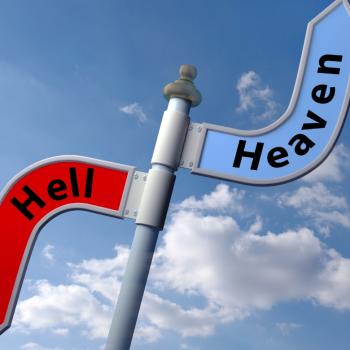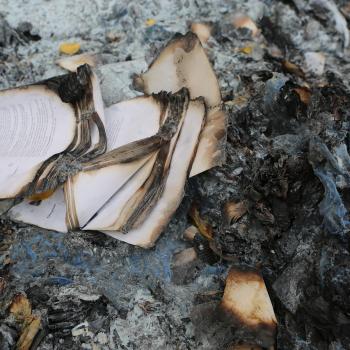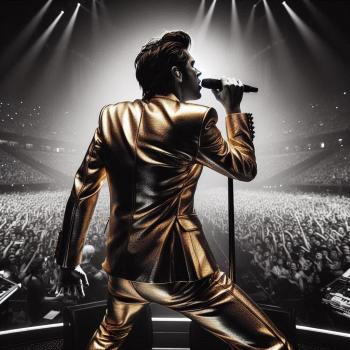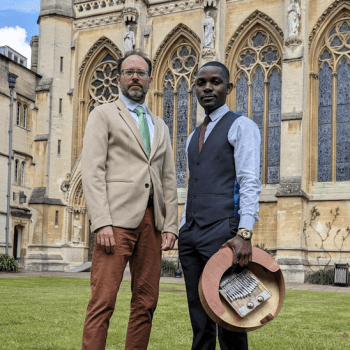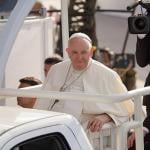How can we listen to silence? How can that be our prayer? And where can it take us?
Guest post by Susan Butterworth
Recently I was gifted tickets to a wonderful concert of the Boston Symphony Orchestra. I was excited to hear the headline work, Mozart’s Requiem. Needless to say, the Mozart was glorious, a sublime example of the intersection of music and Christianity.
But the experience that moved me even more was the unexpected first half of the program Tabula Rasa, a piece for two violin soloists, string orchestra, and piano by the Estonian composer Arvo Pärt
It’s one of the most famous and emotionally powerful orchestral pieces of the 20th century. As the Arvo Part Centre says (without exaggeration):
Tabula rasa has become one of the cult pieces in the music world and has prompted many composers and musicians, as well as concert audiences, to listen to and understand music in a completely new way.
And as critic Rob Cowan said in a 2023 retrospective about the 1984 recording that introduced the world to the piece:
Tabula rasa helped re-educate our ears and throw open the doors of our musical sensibilities to spatial domains that had otherwise been closed to us.
Music about Silence
The movement that struck me the most was the second, “Silentium.” This deeply meditative piece incorporates silence as part of the music and ends with the conductor actually conducting four bars of complete silence. This stunning communal experience of silence — Symphony Hall was packed — brought forth an energy not unlike the feeling of a gathering of people praying together.
Taizé
A gathering of people praying in silence brought me back to the Taizé community in France, a monastic community where thousands of visitors gather three times a day to chant and pray together. Taizé prayer is characterized by repetitive chant, and the sound of thousands of faithful people singing prayers with heart and harmony is transcendent. I wept often at Taizé. I wept as we sang Laudate Omnes Gentes in Latin while gathering for my first meal in community. I wept while we sang the sublime Bogoroditse Dievo (O Holy Mary, mother of God, rejoice) in Old Church Slavonic during song practice. Singing in multiple languages, languages that are no longer spoken, languages that are unfamiliar, enters the heart directly, as if without words. At Taizé, the gospel and prayers are read in multiple languages. This is spoken music. At Taizé, everything is prayer, everything is music. And all of this is preparation for the silence. Silence is at the heart of Taizé prayer.
Community
After the silence, after the prayer, after the final Alleluia, everything changes. Strangers become friends, fellow travelers. The goal is unity. Unity within ourselves, unity with God, unity with one other. The community adjourns to a time of fellowship. The prevailing energy is harmony and joy. One of my favorite images at Oyak, the post-Evening Prayer beer garden at Taizé, is of a quartet of brown-robed Franciscan monks, standing at an outdoor table, drinking beer and checking their phones. But the best, most satisfying feeling is watching a diverse, international gathering of students in Cambridge — strait-laced business school types, div school students, straight and gay couples, non-binary folks — drinking tea, relaxing, chatting, joining together in post-prayer unity.
Silence and the Spirit
During the academic year I lead Taizé prayer in the architecturally and acoustically lovely MIT Chapel. The MIT chapel was designed to be an oasis of quiet, isolated from the bustle of the world. The only sound during the time of silence was of our own breath. During the pandemic, we prayed outdoors on Boston Common. During the time of silence, we listened to the sounds of the city. Night sounds. More music. We found that we liked praying outdoors and would occasionally gather for Taizé prayer on summer evenings. In quieter settings, we’d hear birds and insects during the silence.
I think of John Cage’s 4’33”, composed mid-twentieth century in almost the exact year Eero Saarinen’s mid-century MIT chapel was designed. John Cage’s modernist composition is marked by silence. Cage maintains that any auditory experience may constitute music; he intended the ambient sound heard during the silence to be the music.
Indeed, the music, the prayer, the harmony, is all in the Silence. The Holy Spirit dwells in the prayer that is music. The Holy Spirit dwells in Silence.
On Good Friday, we remember a Lord who called out to his Father, but who heard nothing but silence. But that silence was not emptiness. It was full of possibility: like the silence of an empty tomb….
Susan Butterworth, M.A., M.Div, is a writer, teacher, singer, and lay minister. She leads Song & Stillness: Taizé @ MIT, a weekly ecumenical service of contemplative Taizé prayer at the interfaith chapel at Massachusetts Institute of Technology (MIT). She teaches writing and literature to college undergraduates and writes book reviews, essays, and literary reference articles.






